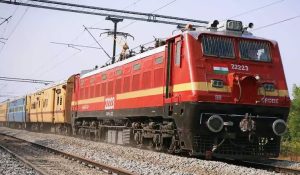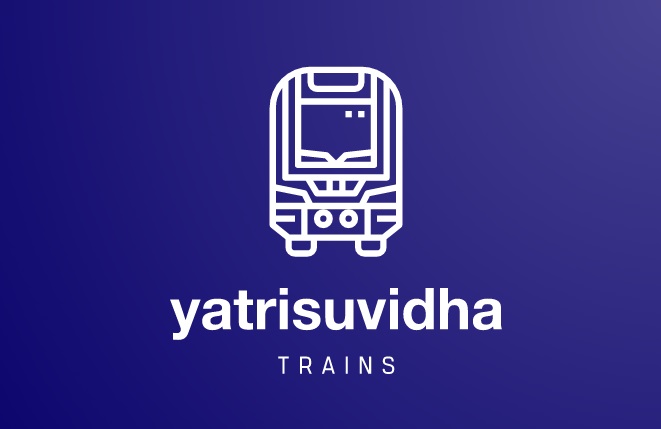
General Waiting List (GNWL) in Indian Railways
The General Waiting List (GNWL) is a critical component of the Indian Railways’ reservation system. It determines whether a passenger can secure a confirmed ticket for their journey when seats are fully booked. GNWL, including its functioning, chances of confirmation, and tips for securing a seat.
What is GNWL?
GNWL stands for General Waiting List, the most common type of waiting list in Indian Railways. When tickets for a train are fully booked, additional passengers who wish to travel are placed on a waiting list. GNWL applies when a passenger’s boarding and destination stations fall within the train’s start-to-end route, with the boarding station being a significant hub or major station.
For example:
Train route: New Delhi to Mumbai Central
Boarding point: Agra
Destination: Surat
Here, Agra and Surat are prominent stations on the train’s route, making the ticket eligible for GNWL if the train is fully booked.
How Does GNWL Work?
Booking Process:
When the train’s available quota for confirmed tickets is exhausted, passengers are added to the GNWL. Each passenger receives a unique waiting list number indicating their position in the queue.
RAC and Confirmation:
If a GNWL ticket is close to the starting position in the queue, it has a higher probability of being upgraded to Reservation Against Cancellation (RAC) or a confirmed berth.
Confirmation depends on cancellations made by passengers holding confirmed or RAC tickets.
Chart Preparation:
The final status of a GNWL ticket is determined during chart preparation, typically 4 hours before the train’s departure for long-distance trains and 2 hours for short-distance trains. At this point:
If your ticket is confirmed, you’ll receive a berth or seat.
If your ticket remains on the waiting list, you cannot board the train (in case of e-tickets). For counter tickets, you can travel in the unreserved compartment if you choose.
GNWL Confirmation Chances
GNWL has the highest confirmation probability compared to other waiting lists like RLWL (Remote Location Waiting List) or PQWL (Pooled Quota Waiting List). The reasons for this are:
Priority in Confirmation:
Since GNWL is tied to major stations, it receives priority during the seat allocation process.
Higher Cancellation Rates:
Passengers boarding from significant stations are more likely to cancel their tickets, freeing up berths for GNWL passengers.
Quota Adjustments:
Indian Railways prioritizes GNWL over other quotas when reallocating canceled berths.
Factors Influencing GNWL Confirmation
Several factors determine whether a GNWL ticket gets confirmed:
Initial Waiting List Number:
The closer your GNWL number is to 1, the higher the likelihood of confirmation.
Train Popularity:
Highly popular routes (e.g., Mumbai to Delhi) have lower confirmation chances due to high demand.
Off-season and less popular routes offer better odds.
Travel Date and Time:
Tickets booked for weekends, holidays, or festival periods have lower chances of confirmation due to increased demand.
Mid-week or non-peak hours improve the odds.
Cancellation Patterns:
Historical data for specific trains often indicates how many cancellations occur before departure. This can guide expectations.
Quota Adjustments:
If the train has surplus berths in other quotas (like the ladies’ or senior citizens’ quotas), these are reassigned to GNWL passengers during chart preparation.
Tips to Improve GNWL Confirmation Chances
Book Early:
Secure your ticket as soon as bookings open, usually 120 days in advance, to minimize your waiting list number.
Check Alternate Trains or Routes:
Opt for connecting trains or alternative routes if direct trains have high GNWL numbers.
Monitor Ticket Status:
Regularly check your ticket status on the IRCTC website or mobile app. Set alerts for status changes.
Flexible Travel Plans:
Be open to adjusting your travel date or time for better availability.
Opt for Tatkal or Premium Tatkal Quotas:
These quotas open closer to the travel date and may offer confirmed seats.
GNWL Ticket Types
E-Tickets:
If an e-ticket remains in the waiting list after chart preparation, it is automatically canceled, and the fare is refunded.
You cannot travel with a GNWL e-ticket that hasn’t been confirmed or upgraded to RAC.
Counter Tickets:
A waiting list counter ticket is not automatically canceled. Passengers can travel in the general compartment if they choose.
GNWL vs. Other Waiting Lists
Feature GNWL RLWL PQWL
Applicability Major stations on train route Intermediate stations Small pools (specific stretches)
Confirmation Priority High Medium Low
Cancellation Dependency High Moderate Moderate
Automatic Cancellation Yes (for e-tickets) Yes (for e-tickets) Yes (for e-tickets)
Frequently Asked Questions
Can I travel with a GNWL ticket?
No, only RAC or confirmed GNWL tickets allow travel. E-tickets with waiting list status after chart preparation are invalid.
What happens if my GNWL ticket isn’t confirmed?
For e-tickets, the amount is refunded automatically. For counter tickets, you can claim a refund at the station or travel in the general compartment.
How do I check my GNWL status?
Log into the IRCTC portal, or use third-party apps like ConfirmTkt or Trainman.
Which waiting list confirms first?
GNWL usually has the highest confirmation priority, followed by RLWL, PQWL, and others.
The General Waiting List (GNWL) offers the best chances of ticket confirmation in Indian Railways, especially for passengers boarding at major stations. Understanding how GNWL works, monitoring your ticket status, and adopting strategies like early booking can significantly improve your travel experience. While no system guarantees confirmation, GNWL remains a reliable option for most travelers.

Leave a Reply